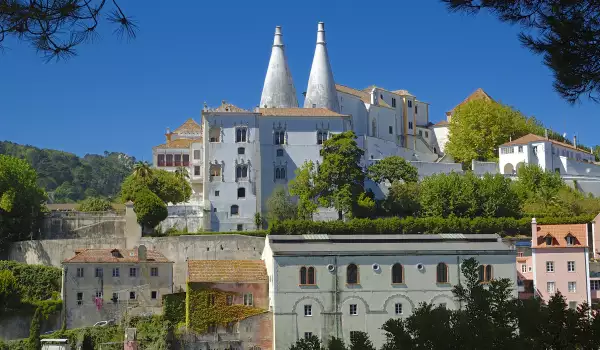Sintra

Sintra is a remarkable Portuguese city, whose architecture can not leave you unmoved and indifferent. Located just 12 km from the sea coast of Portugal, the city is built on the northern slopes of the wooded mountain Serra De Sintra. From here, the capital Lisbon is only 30 km towards southeast. Nearby is the westernmost point of Europe (Cape Roca), which reaches the Atlantic Ocean.
De Sintra is a unique mixture of trees and all kinds of exotic plants, fountains hundreds of strange Moorish architectures, including mineral water points, castles and houses with whimsical pink walls covered with moss. Among them, you still feel a noble and royal atmosphere.

In this Portuguese town has travelled Lord Byron, in a carriage. His work in "wanderings of Childe Harold" addresses it as a "delightful Garden of Eden" and compares it with the earthly Eden. "The city is full of beauty - natural and manmade. Palaces and gardens rise among the rocks, waterfalls and gaps, including monasteries, built at amazing heights; to reveal a panoramic view of the sea and Tejo ... a landscape of the western mountains with the lush greenery of southern France, "were the words of the author.
All of Sintra was the summer residence of Portuguese kings and the princes of Europe and in the 18-19th century prominent writers such as Hans Christian Andersen and Agatha Christie began to stay here.

In a large square in town is the Royal Palace, now converted into a museum. But undoubtedly the biggest attraction of the city is Pena Palace, which stands on a hill 500 meters above sea level.
It was built in 1839 by Ferdinand of Saxe-Coburg, on the ruins of the monastery from the 16th century. The castle itself was built in the 18th century by the Moors - hence the name-“the Moorish fortress”. Particularly impressive is the style of the palace, which is a mix between gothic, romanticism and Manuelese.
With its medieval luxury, royal chambers, great paintings and porcelain, it is considered an emblem of the Portuguese architectural art at the time of Romanticism. From here, the view of the ocean is really profound. The whole castle is surrounded by lush, green beautiful parks, with Ivy leaves clinging to the buildings and picturesque orange trees.










